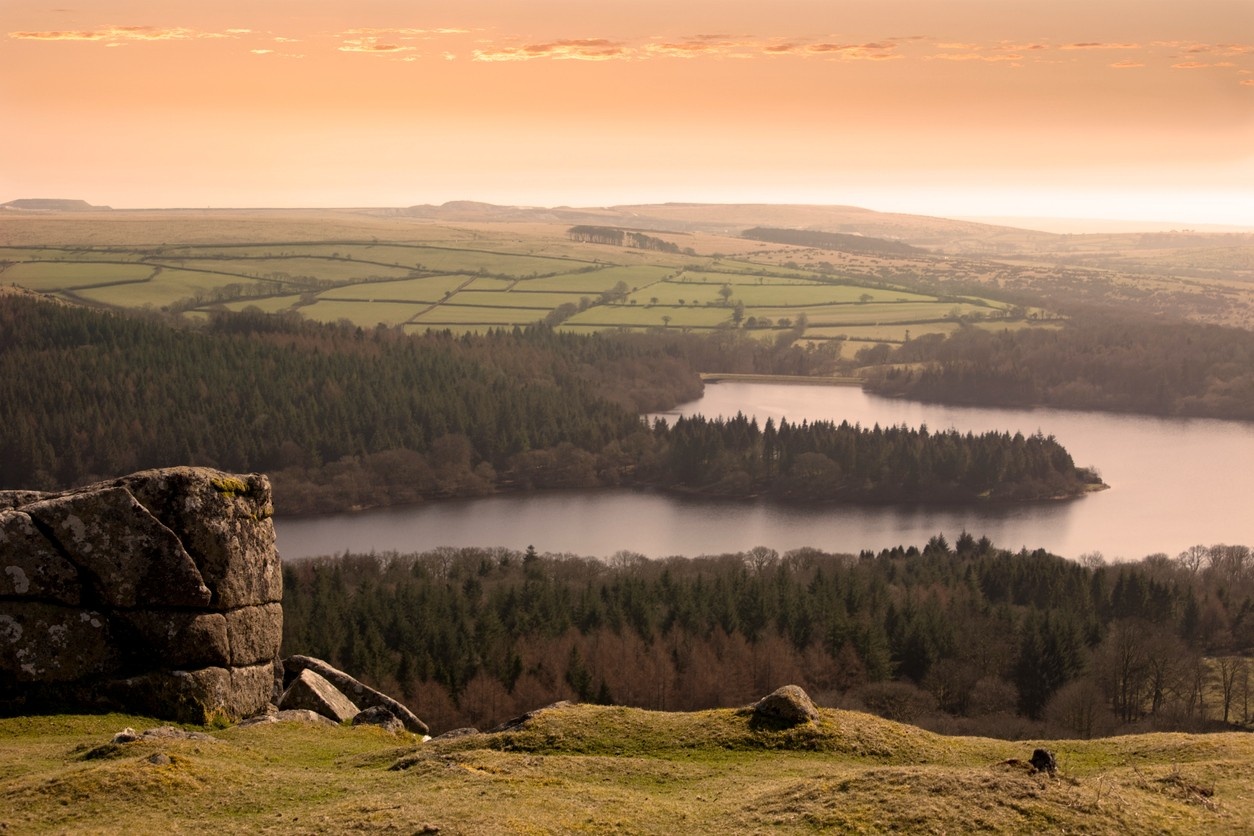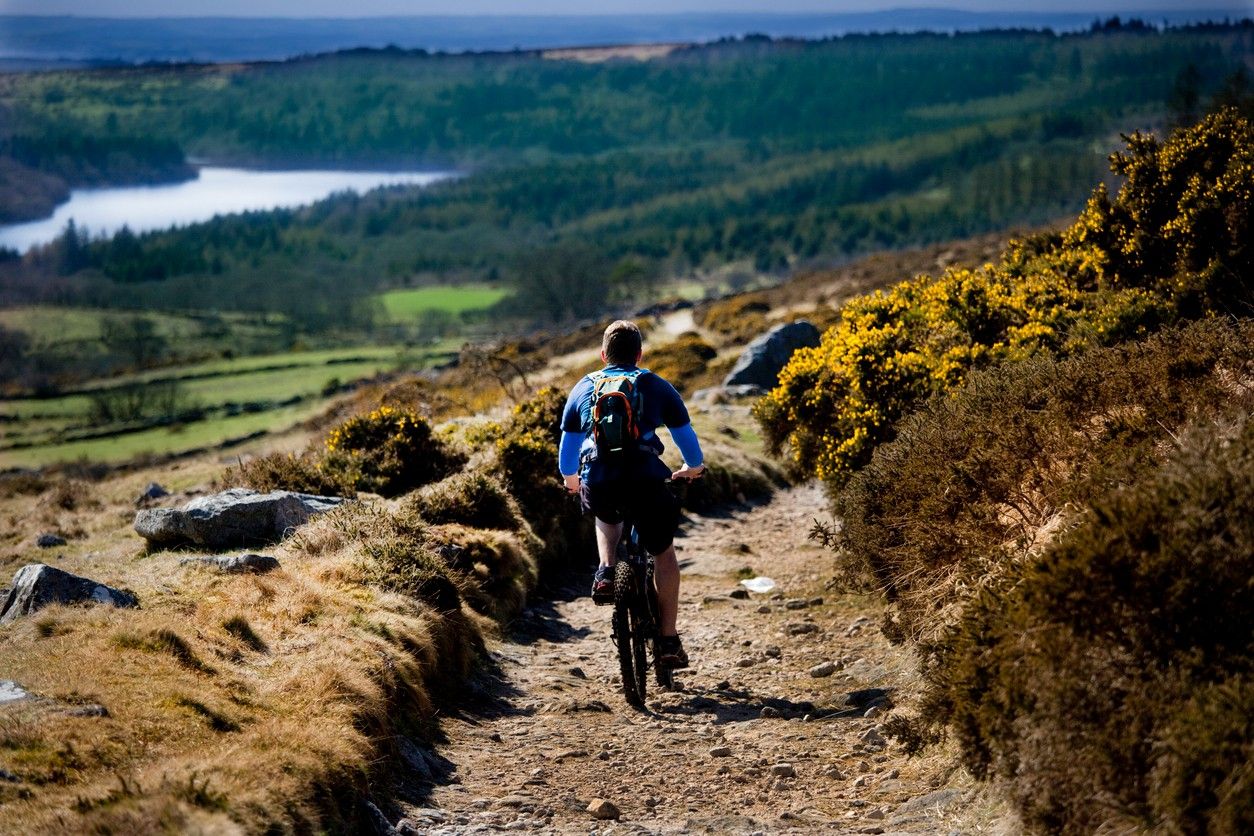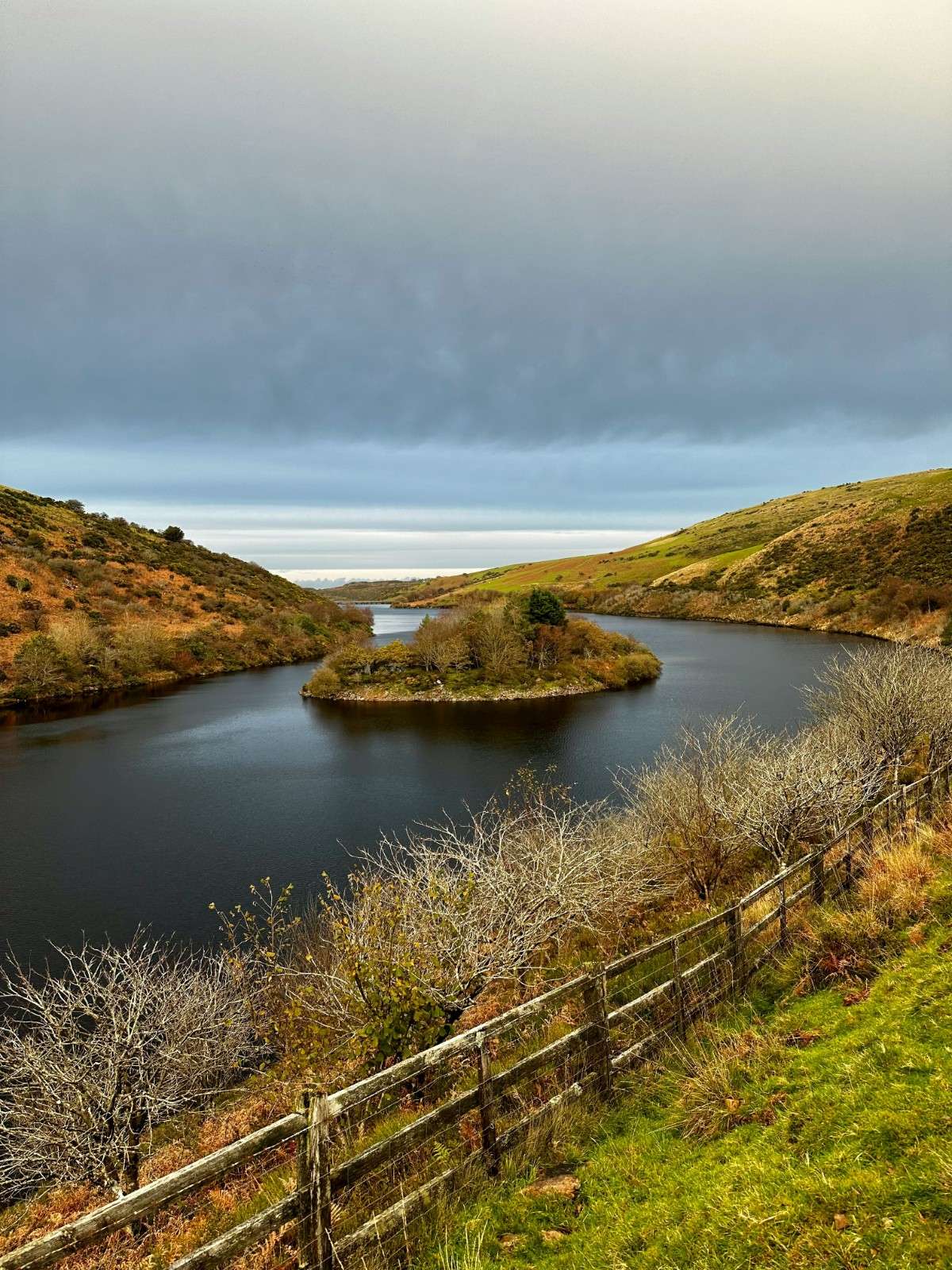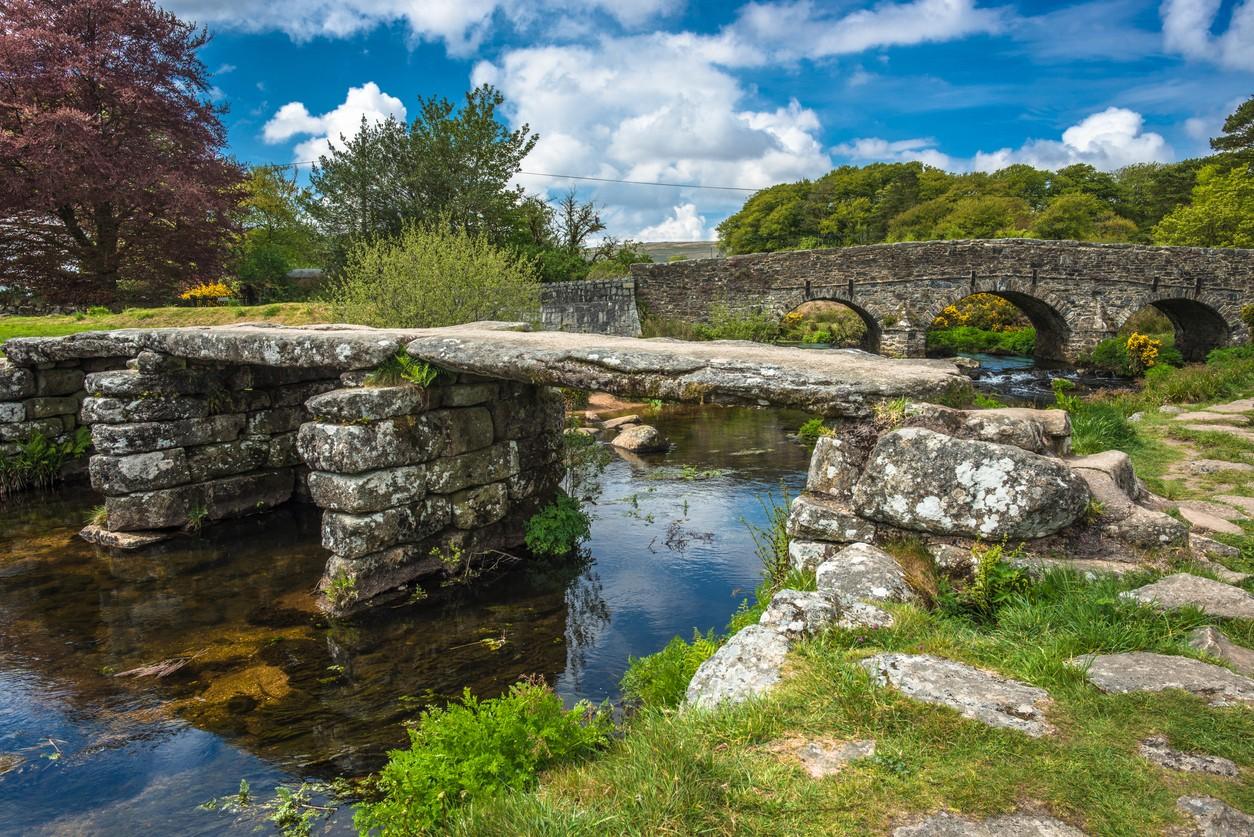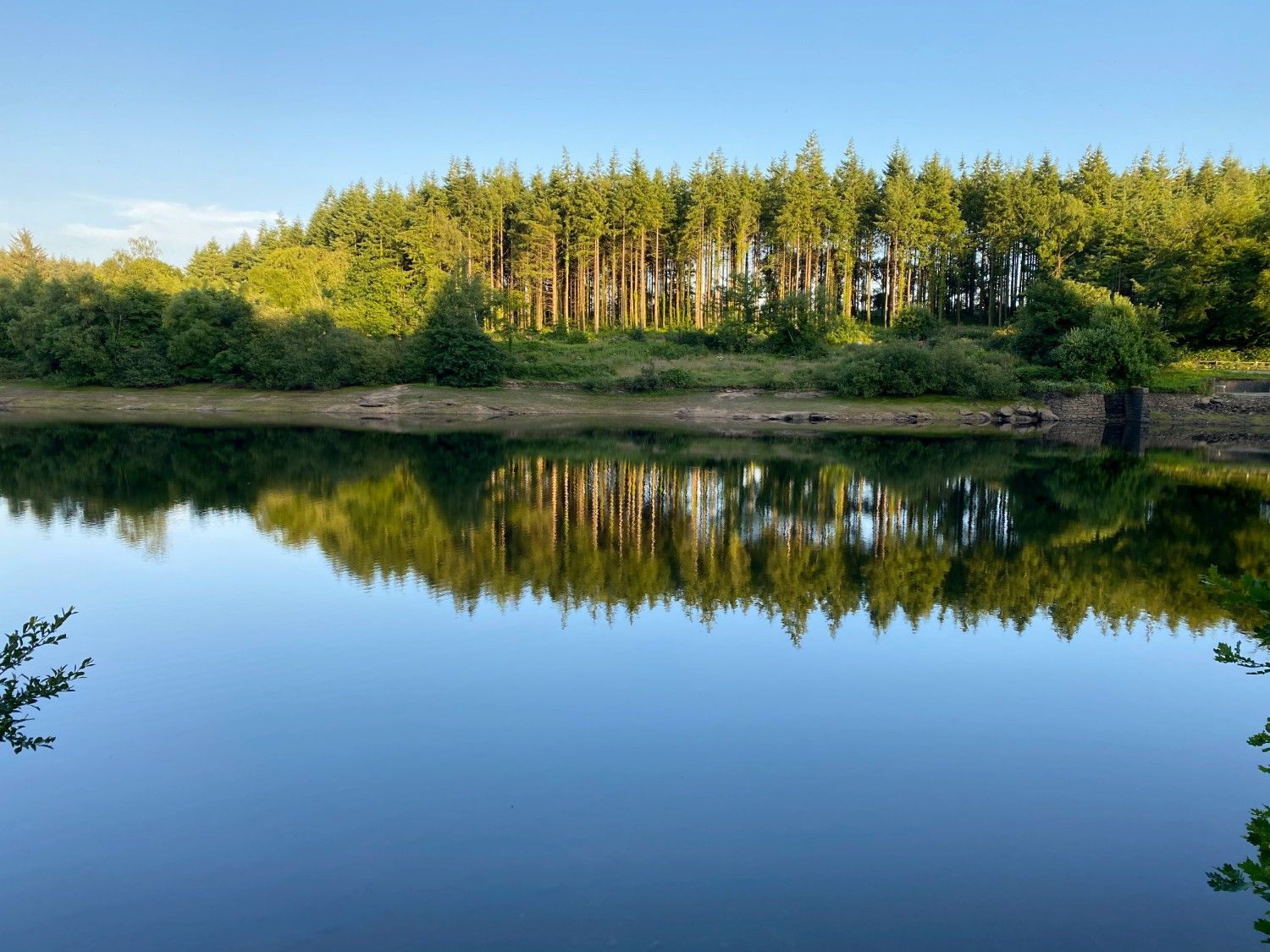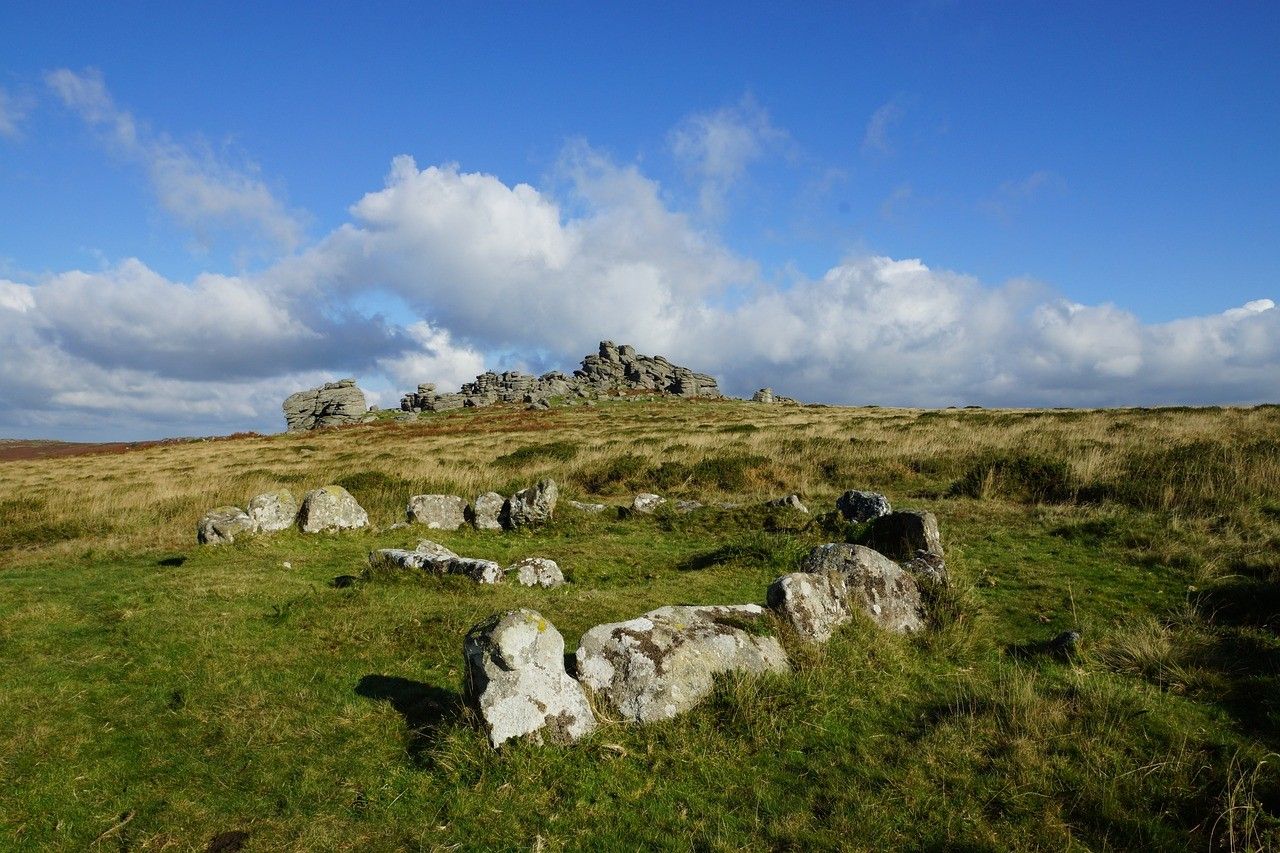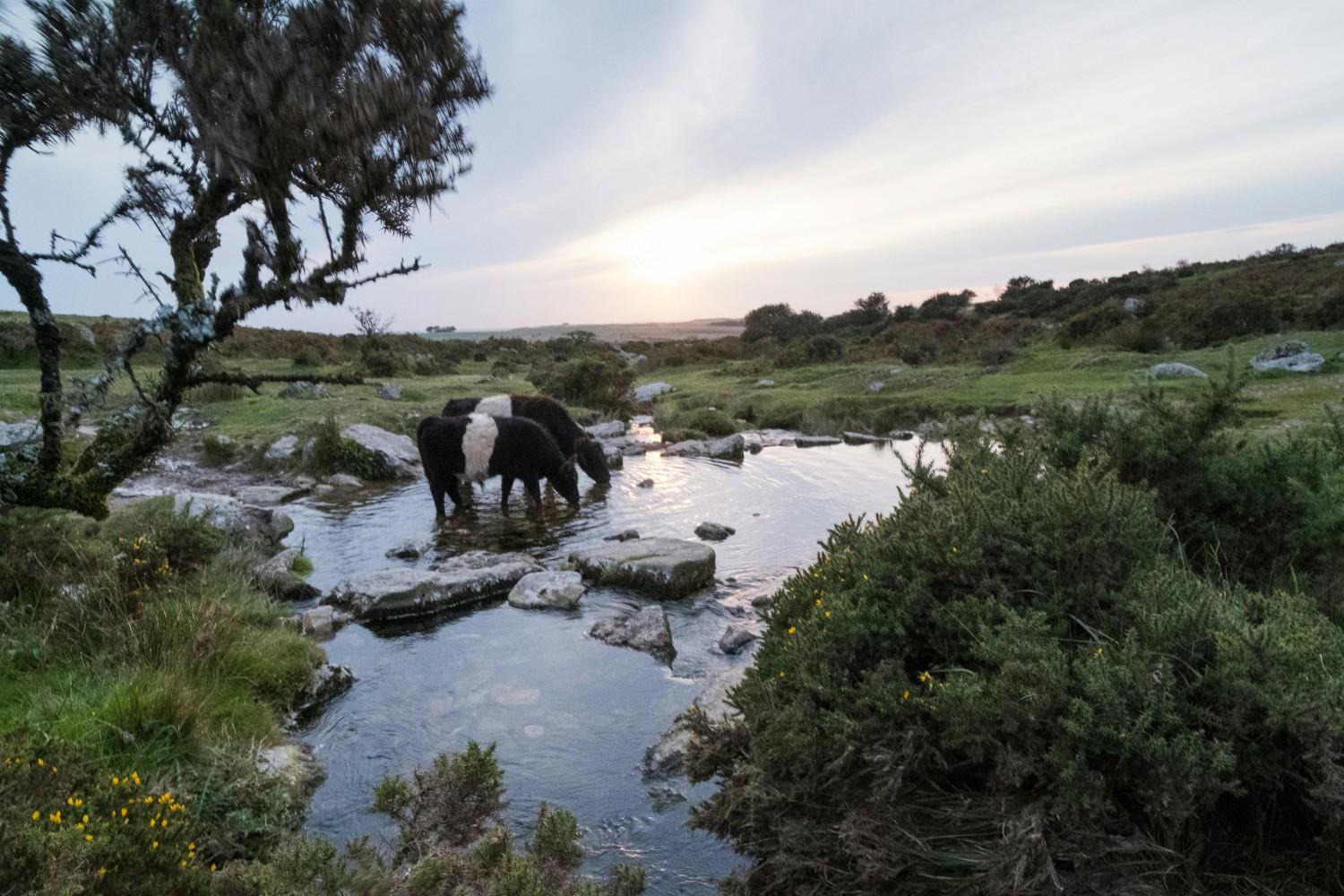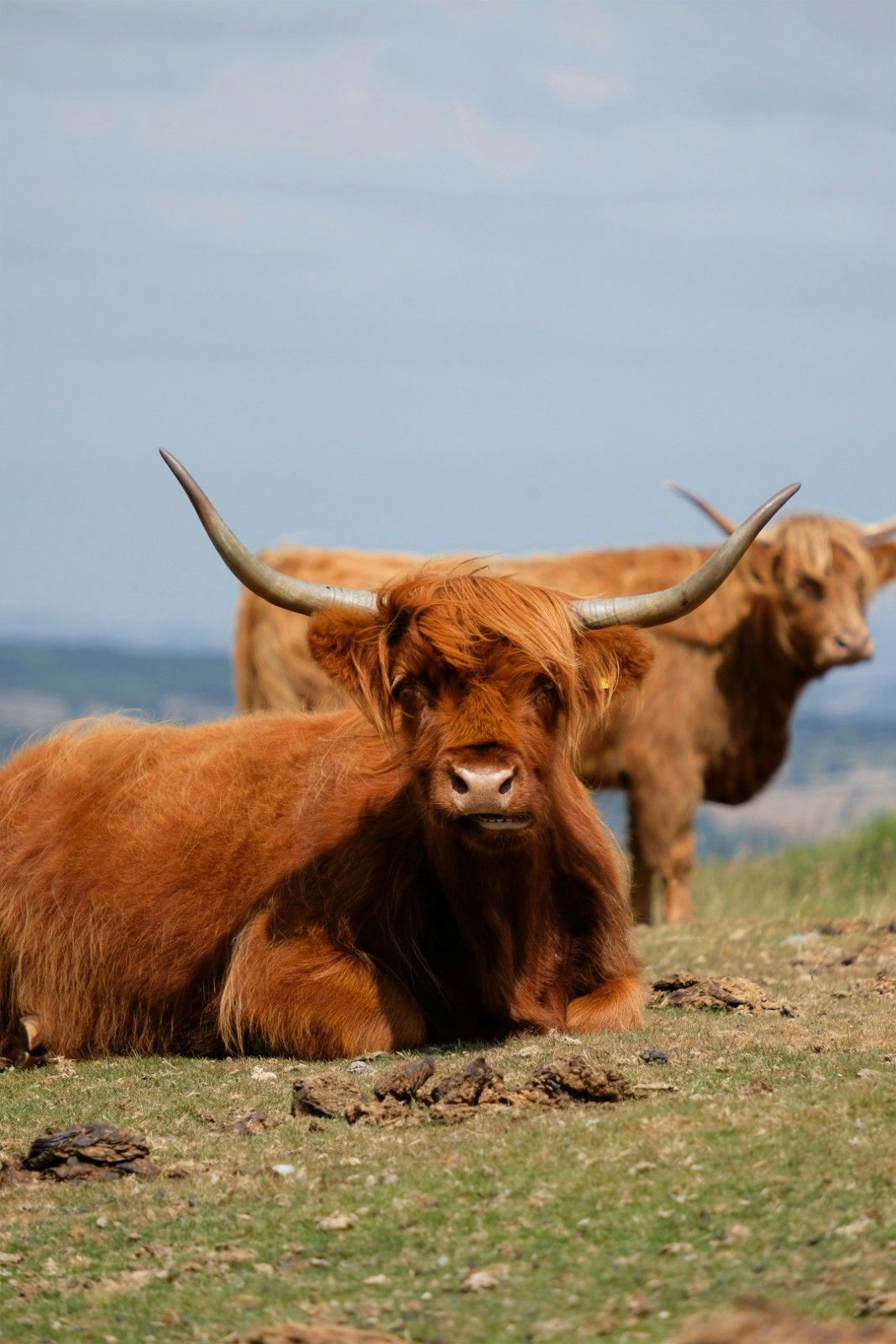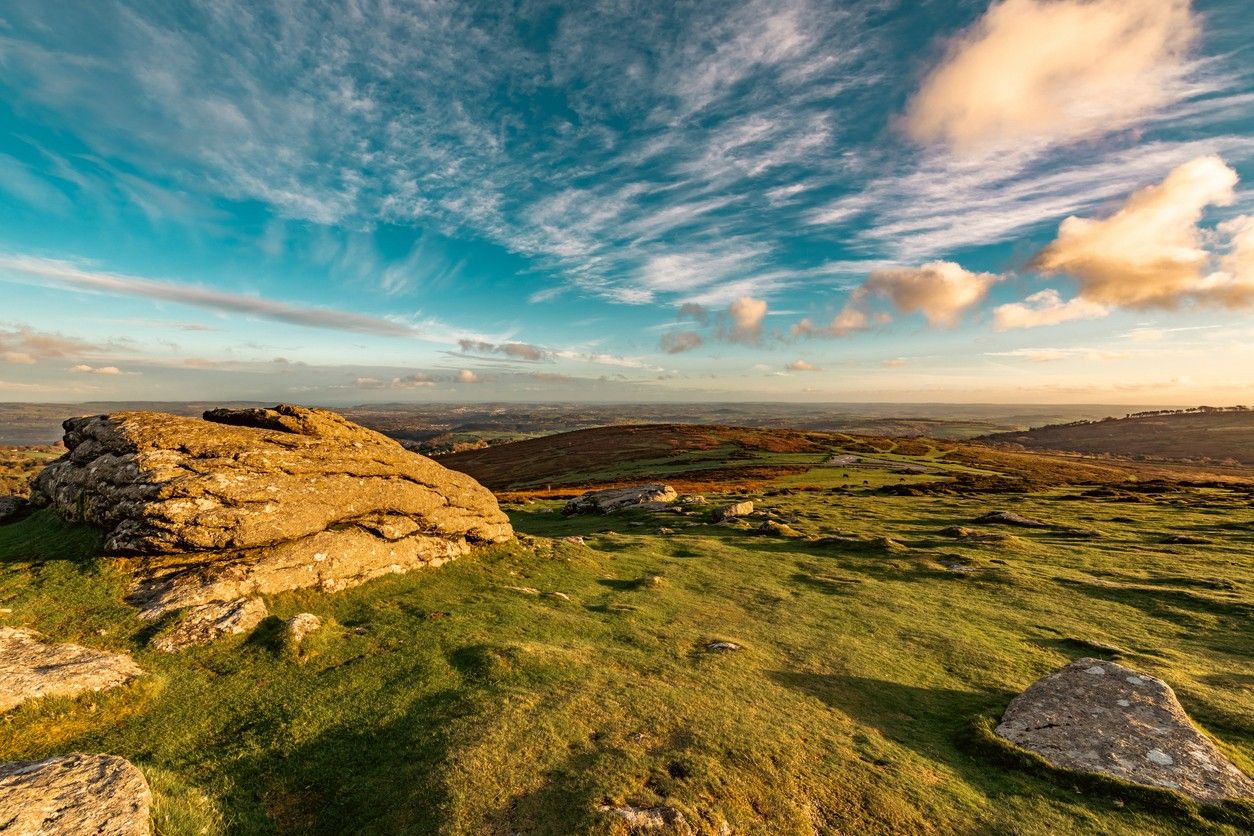Spanning a vast 368 square miles, Dartmoor National Park in Devon offers a captivating and rugged landscape unlike any other in the UK. This ancient moorland, blanketed in heather and dotted with granite tors, holds a wealth of natural wonders and stories waiting to be uncovered. Whether you seek outdoor adventures, historical marvels, or simply a chance to escape the hustle and bustle, Dartmoor National Park beckons you to immerse yourself in its untamed beauty. Here, you can test your mettle on the moorland hiking trails as you conquer towering tors.
A Playground for Outdoor Enthusiasts
Dartmoor National Park is a veritable playground for outdoor enthusiasts, with countless opportunities for exploration and adventure across its vast, untamed landscape. From casual rambles to multi-day treks, and leisurely family cycles to adrenaline-pumping mountain biking - Dartmoor offers a buffet of outdoor pursuits to satisfy every appetite.
Hiking & Walking
With over 600 miles of footpaths traversing its rugged moorlands, ancient woodlands, and dramatic river valleys, Dartmoor National Park offers a true hiker's paradise. From multi-day treks like the famous 90-mile Dartmoor Way to shorter circular routes taking in iconic sites, there are trails to suit all abilities and interests. Whether you seek strenuous upland hikes with precipitous tors and sweeping vistas, peaceful rambles along babbling brooks and picturesque reservoirs, or opportunities to discover the park's rich industrial heritage, Dartmoor's walking trails provide the perfect means to immerse yourself in this untamed landscape. Lace up your boots and come to experience the beauty of this magical place one step at a time. Here are some of the best hiking trails:
The Dartmoor Way - This 90-mile circular route takes hikers through the heart of the national park, passing iconic sites like Haytor Rocks and Saddle Tor.
Postbridge Walk - An 8.5-mile route following the East Dart River and taking in the famous Clapper Bridge.
Belstone Walk - A strenuous 7-mile circular hike featuring steep ascents and panoramic views from Oke Tor.
Burrator Reservoir Circuit - An easy 6-mile loop around the scenic Burrator Reservoir on the park's western edge.
Lydford Gorge Walk - Follow the River Lyd through a dramatic, moss-covered gorge on this 2.5-mile trail.
Hunters' Path - This historic 15-mile path winds across remote moorland, linking former tinners' and miners' cottages.
Two Castles Trail - Stretch your legs on this 24-mile route connecting the castles of Okehampton and Launceston.
Templer Way - An 18-mile former tramway route connecting Haytor to the Stover Canal in Newton Abbot.
Holne Moor Loup - Take on this challenging 8-mile circuit with steep ascents rewarded by sweeping vistas.
Powdermills Route - Explore the park's industrial heritage on this 6-mile loop visiting former gunpowder mills.
Wild Camping
For the ultimate immersion in Dartmoor's untamed beauty, wild camping is permitted in designated areas of the national park. After obtaining the necessary permits, you can pitch your tent beneath starry night skies with only the gentle rustling of the wind and the distant calls of wildlife to lull you to sleep. In the morning, you'll be greeted by wildlife roaming just outside your tent flaps - Dartmoor ponies grazing peacefully, red deer stags majestically surveying their domain, or a lively crew of meadow pipits flitting about. All around, the solitude is broken only by the soothing sounds of nearby streams and rivers gurgling over rocks.
While incredibly rewarding, wild camping on Dartmoor requires proper preparation, gear, and adherence to strict guidelines from the National Park Authority. All camping is prohibited within 100m of roads or antiquities like stone circles and ruins. Campers must obtain a permit, stick to designated areas, carry out all belongings and waste, and follow Leave No Trace principles. The ability to wild camp is a privilege to be cherished responsibly to preserve Dartmoor's fragile landscape. But for the adequately prepared and respectful adventurer, this unparalleled opportunity to sleep under Dartmoor's starry night skies and wake up immersed in nature is an incomparable experience.
Some of the best spots for wild camping on Dartmoor include the moorlands around Sourton Tors in the north, the isolated Langcombe Valley area, and the high ground east of Postbridge offering panoramic vistas. Just be sure to pick up the relevant Ordnance Survey map and comply with all regulations. With the right gear and mindset, you'll be rewarded with unforgettable nights amid Dartmoor's untamed beauty.
Cycling Trails
With a vast network of bridleways and purpose-built mountain biking trails, Dartmoor provides two-wheeled adventures for all ages and skill levels. Road cyclists can challenge themselves in undulating lanes while drinking in the stunning moorland scenery.
Haytor Granite Trail - A challenging 13.5-mile loop featuring rocky technical descents and climbs around the iconic Haytor Rocks.
Dartmoor North Route - This 27-mile circular route takes in stretches of former ancient trackways across northern Dartmoor's high moors.
Dartmoor South Route - The southern counterpart to the North Route covering 27 miles of hilly terrain around Ivybridge.
Wray Valley Trail - An easy 8.5-mile flat route along a former railway line with glimpses of abandoned train architecture.
Ycle Path Through Time - Explore over 4,000 years of history on this 11-mile circuit linking archaeological sites and medieval villages.
Plym Valley Trail - A scenic 14-mile off-road route following the River Plym from Cadover Bridge to Plymouth.
Rangers Road - Pedal along part of this high, remote Dartmoor ridge road for incredible views on an 8-mile loop.
Fremington Trail Network - Featuring 15 miles of waymarked circular routes with berms, jumps and rock gardens for mountain bikers.
Meldon Trails - Technically challenging singletrack and downhill runs for advanced riders at this purpose-built bike park.
Granite Way - Follow this level 11-mile former railway line linking Okehampton and Lydford on the park's western edge.
Wildlife Watching & Photography
For those seeking a more leisurely pace, Dartmoor provides ample opportunities to immerse yourself in nature through wildlife watching and landscape photography. Keep a lookout for the park's free-roaming Dartmoor ponies, red deer, foxes, and numerous bird species like the stonechat and cuckoo. Budding photographers will find no shortage of subjects across Dartmoor's picturesque scenery. Capture the striking silhouettes of granite tors at sunrise, the vibrant purple expanses of blooming heather, or the atmospheric fog swirling through wooded valleys. No matter which outdoor pursuit calls to you, Dartmoor's vast and varied terrain provides the ultimate playground for adventure and exploration. Just be sure to pack appropriate gear, consult a Dartmoor National Park map to plan your routes, and prepare for the area's famously changeable weather.
A Living Museum of History and Heritage
Beneath Dartmoor National Park's rugged, untamed landscape lies a rich tapestry of human history dating back thousands of years. From the fascinating remnants of prehistoric settlements to abandoned medieval villages and the remains of the region's industrial past, the park is an open-air living museum inviting exploration of the lives and ingenuity of those who once called this unforgiving terrain home.
Prehistoric Sites & Monuments
Dartmoor's expansive moorlands are dotted with enigmatic reminders of the park's earliest inhabitants. One of the most iconic is the beehive-shaped huts and stone-walled enclosures of Grimspound, an abandoned Bronze Age village thought to date back over 3,000 years. Another mystical highlight is the Merrivale Stone Rows and Circles, a complex of multiple rows and standing stones aligned for unknown ceremonial purposes. Other must-see prehistoric gems include the eerie, crumbling stone hut circles and circular pound enclosures of Shavercombe and Yellowhead Down. These fragile, grassy remnants provide rare glimpses into how Dartmoor's ancient Britons survived amid the region's unforgiving climate and terrain.
Abandoned Medieval Villages
Skipping ahead a few millennia, Dartmoor's agricultural legacy can be uncovered in the atmospheric ruins of long-deserted medieval villages and hamlets. Perhaps the most poignant is the abandoned stone cottages, barns and mills of Hound Tor where the last residents departed around 1700. Other evocative sites include the abandoned farm buildings and ruined church of Buckland-in-the-Moor, and the solitary crumbling granite cottage that is all that remains of the isolated moorland settlement of Ditsworthy Warren. Walking among these relics, you can almost envision the hardscrabble lives and communities that once thrived here long ago.
Industrial Archaeology
More recent remnants reveal how Dartmoor's wealth of natural resources like tin, copper, granite and wool powered the region's industrial might over centuries past. Key sites include the atmospheric ruins of tin mines and ore works like Eylesbarrow, with its ghostly derelict buildings and mineshafts. At Finch Foundry near Sticklepath, you can witness the marvels of industrial innovation in an incredibly rare, complete 19th-century water-powered forge and wood mill. Other relics like old quarries, mineral tramways and abandoned leats (manmade channels) provide glimpses of this hard-scrabble industry that fueled the local economy for generations. With so many layers of history visible across Dartmoor's haunting ruins and evocative sites, the park offers boundless opportunities to step back in time and peel back the millennia through guided tours, exhibits and simply exploring this open-air museum at your own pace. Just be sure to pack your imagination and sense of adventure.
A Haven for Nature and Wildlife
Beyond its historical and cultural significance, Dartmoor National Park is a true haven for nature and wildlife. The park's diverse habitats, ranging from rugged moorland to ancient woodlands and winding rivers, support a rich array of flora and fauna, making it a must-visit destination for nature enthusiasts. As you explore the park, keep an eye out for the iconic Dartmoor ponies, which have roamed these moors for centuries. These hardy and resilient animals are an integral part of the park's landscape, and their grazing helps maintain the delicate balance of the moorland ecosystem. Watch as they graze peacefully among the heather and granite tors, or catch a glimpse of their foals frolicking in the spring sunshine.
The park is also home to a diverse array of bird species, from the majestic red deer to the elusive Dartmoor capper, a small yet striking bird that has become a symbol of the park. Keep your eyes peeled for these feathered inhabitants as you explore the moors, or join one of the park's guided birdwatching walks to increase your chances of spotting these winged wonders. For those with a keen eye for flora, Dartmoor National Park offers a true botanical paradise. The park's varied habitats support a rich tapestry of plant life, from the vibrant heather that carpets the moorlands to the delicate wildflowers that dot the ancient woodlands. Be sure to pack your camera or sketchbook to capture the beauty of these natural wonders.
The park's rivers and streams are also a haven for aquatic life, including the elusive otter and the critically endangered freshwater pearl mussel. Take a stroll along the banks of the River Dart or the East Dart River, and keep a watchful eye for these elusive creatures as they go about their daily routines. To truly appreciate the park's natural wonders, consider joining one of the park's guided nature walks or attending one of the many events and workshops hosted throughout the year. These experiences offer a unique opportunity to learn from experts and gain a deeper appreciation for the delicate balance of life that thrives within Dartmoor National Park.
A Taste of Dartmoor's Culinary Delights
No visit to Dartmoor National Park would be complete without indulging in the region's rich culinary heritage. From cosy pubs steeped in history to farm-fresh produce and artisanal delicacies, the park and its surrounding villages offer a true feast for the senses. One of the highlights of any Dartmoor adventure is the opportunity to experience the warm hospitality and hearty fare of the park's pubs in Dartmoor National Park. These traditional inns, often housed in centuries-old buildings, offer a cosy respite from the elements and a chance to sample locally brewed ales and ciders. Tuck into a plate of homemade pasties or a steaming bowl of stew, and soak in the convivial atmosphere as you swap stories with fellow travellers and friendly locals.
For those seeking a more refined dining experience, the park and its surrounding villages are home to several acclaimed restaurants and farm shops, showcasing the best of Devon's locally sourced produce and artisanal delicacies. Savour the rich flavours of slow-roasted meats or indulge in fresh seafood straight from the nearby coasts, all expertly prepared by talented chefs with a deep appreciation for the region's culinary traditions. No visit to Dartmoor would be complete without sampling the park's renowned clotted cream, a thick and decadent cream that is the perfect accompaniment to freshly baked scones or tangy jams. Visit one of the park's many cream tea rooms or farm shops to indulge in this quintessentially British treat, and take home a jar or two to savour the flavours of Dartmoor long after your visit.
For those with a sweet tooth, Dartmoor National Park offers a tempting array of artisanal confections and baked goods. From handmade fudge and chocolates to traditional Devonshire splits and lardy cakes, these sweet treats are sure to delight even the most discerning palate. To truly immerse yourself in the culinary delights of Dartmoor, consider attending one of the park's many food festivals and events. These celebrations offer a chance to sample a wide array of local fare, meet the producers and chefs behind the dishes, and participate in workshops and demonstrations that will deepen your appreciation for the region's rich culinary heritage.
Planning Your Dartmoor Adventure
As you begin planning your adventure to Dartmoor National Park, there are a few key considerations to keep in mind. From choosing the right accommodation and transportation options to staying informed about the latest Dartmoor National Park news and events, a little preparation can go a long way in ensuring a seamless and unforgettable experience.
Accommodation Options
Dartmoor National Park offers a wide range of accommodation options to suit every preference and budget. For those seeking a truly immersive experience, consider booking a stay at one of the park's Dartmoor National Park hotels or cosy bed and breakfasts. These welcoming establishments often boast stunning moorland views and offer an authentic taste of Dartmoor hospitality.
Alternatively, those seeking a more rustic adventure may opt for Dartmoor National Park camping, either in one of the park's designated campsites or by obtaining a permit for wild camping. Just be sure to familiarise yourself with the Dartmoor National Park Authority's guidelines and regulations to ensure a responsible and sustainable camping experience.
For larger groups or families, consider renting a self-catering cottage or holiday home within the park or in one of the surrounding villages. These charming accommodations offer the convenience of a home away from home, complete with fully equipped kitchens and cosy living spaces to unwind after a day of exploration.
Transportation and Getting Around
While Dartmoor National Park is relatively easy to access from major cities like Exeter and Plymouth, getting around within the park itself can be a bit more challenging. Many visitors opt to explore the park by car, taking advantage of the scenic drives and ample parking areas near popular trailheads and attractions. However, for a more sustainable and immersive experience, consider exploring the park on foot or by bicycle. The park's extensive network of trails and quiet country lanes offer ample opportunities for hiking, cycling, and even horseback riding. Just be sure to consult the Dartmoor National Park map and plan your routes accordingly. For those who prefer a more leisurely pace, consider taking advantage of the park's public transportation options, including bus services that connect to various points of interest within the park and surrounding areas.
No matter how you choose to experience Dartmoor National Park, one thing is certain: this wild and enchanting landscape will leave an indelible mark on your heart and soul, beckoning you to return time and again to uncover its countless wonders.
Related articles

Let us know you agree to cookies
We use marketing, analytical and functional cookies as well as similar technologies to give you the best experience. Third parties, including social media platforms, often place tracking cookies on our site to show you personalised adverts outside of our website.
We store your cookie preferences for two years and you can edit your preferences via ‘manage cookies’ or through the cookie policy at the bottom of every page. For more information, please see our cookie policy.
